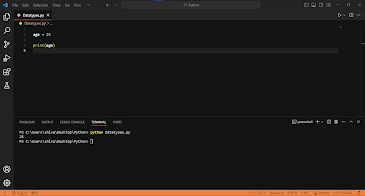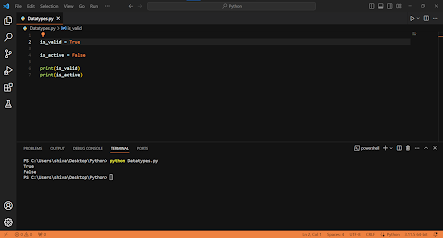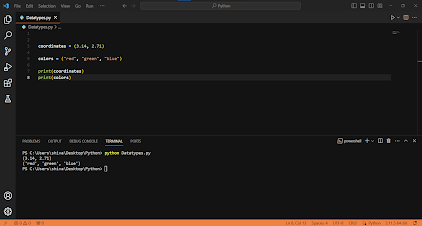Python Datatypes
Data types is used to define the type of value that a variable can hold. It specifies the nature of the data and the operations that can be performed on that data.
Python supports several data types to represent different kinds of values. Here are some of the commonly used data types in Python, along with examples:
Integer (int):
- Used to represent whole numbers.
- Example:
Float (float):
- Used to represent decimal numbers.
- Example:
String (str):
- Used to represent text or sequences of characters.
- Example:
Boolean (bool):
- Used to represent either `True` or `False`.
- Example:
List (list):
- Used to store a collection of values, which can be of different data types.
- Lists are ordered and mutable (you can change their contents).
- Example:
Tuple (tuple):
- Similar to lists, but tuples are immutable (you cannot change their contents after creation).
- Example:
Dictionary (dict):
- Used to store key-value pairs.
- Dictionaries are unordered and mutable.
- Example:
Set (set):
- Used to store a collection of unique values.
- Sets are unordered and mutable.
- Example:
NoneType (None):
- Represents the absence of a value or a null value.
- Often used to initialize variables.
- Example:
These are some of the basic data types in Python. Understanding these data types and how to work with them is essential for writing Python programs.











